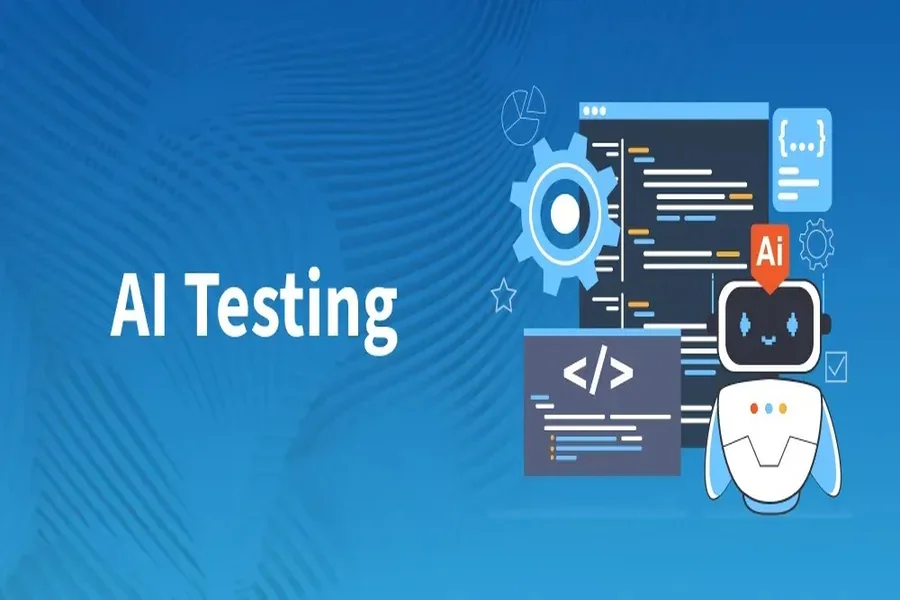Smarter Test Automation with AI
Modern software teams need both adaptability and disciplined processes to ensure reliable delivery. AI powered test automation enables organizations to expand test coverage, reduce maintenance effort, and identify risks earlier—without overloading pipelines with brittle, noisy checks.
AI acts as the engine behind smarter testing: it generates candidate tests from user stories, selects the most relevant regressions for each code change, and minimizes test flakiness with self-healing locators. By adding visual regression checks and anomaly detection, AI also catches layout shifts, performance degradation, and error spikes before customers are affected.
The goal isn’t to run more tests—it’s to deliver more reliable signals per minute, so product increments move smoothly from commit to release.
Where AI Fits in the Pipeline
- Requirements → Tests: Language models convert acceptance criteria into structured test scenarios—positive, negative, and boundary cases—ready for human review.
- Change → Selection: Impact analysis prioritizes tests by churn, complexity, and risk, running the most critical ones first to cut runtime without raising risk.
- UI Robustness: Self-healing locators adjust automatically when UI elements shift, logging decisions with confidence scores for transparency.
- Early Non-Functional Alerts: Computer vision detects subtle visual regressions, while anomaly detection identifies latency and error trends that basic status codes miss.
Guardrails That Maintain Trust
AI must remain observable, auditable, and governed. To ensure reliability:
- Apply conservative thresholds for self-healing and fail loudly when confidence is low.
- Require human review before accepting locator changes.
- Version prompts, test scripts, and artifacts in source control.
- Use synthetic, privacy-safe data with strict access control.
- Quarantine flaky tests under defined SLAs—treating flakiness as a defect, not background noise.
These safeguards ensure AI boosts testing speed and accuracy without masking real issues.
Why Governance Makes AI Productive
AI becomes transformative only when paired with strong Quality Assurance and Testing Services. QA teams provide the foundation by:
- Defining clear, testable acceptance criteria and risk-based plans.
- Building a pragmatic test pyramid—unit and API layers as the backbone, with a minimal but business-critical UI layer.
- Strengthening Test Data and Environment Management (snapshots, ephemeral prod-like stacks) for consistent, deterministic runs.
- Embedding performance, accessibility, and security checks into release gates—making compliance continuous rather than one-off.
A Practical 30-Day Rollout
Week 1: Establish KPIs (cycle time, flake rate, defect leakage). Choose two critical flows (e.g., signup → checkout). Set up API smoke tests with deterministic data.
Week 2: Add lean UI smoke tests on critical journeys, enable conservative self-healing, and attach artifacts (logs, traces, videos) to failures.
Week 3: Activate impact-based test selection; add visual diffs, performance, and accessibility checks as release gates; publish dashboards.
Week 4: Expand contract/consumer tests across services, compare metrics before and after rollout, and formalize quarantine SLAs.
KPIs That Demonstrate Value
- Time-to-Green (PR/RC builds): Faster, trusted builds.
- Defect Leakage & Defect Removal Efficiency (DRE): Fewer production escapes, better defect detection.
- Flake Rate & MTTR (Mean Time to Recovery): Higher stability, fewer reruns.
- Maintenance Hours per Sprint: Reduced effort, more time for product development.
Common Pitfalls (and Fixes)
- Over-Automating the UI: Keep UI checks minimal; rely on API/service tests for most validation.
- Blind Trust in Healing: Always require logs, diffs, and approvals before persisting AI changes.
- Unstable Data/Environments: Fix data and environment management first—AI amplifies both strengths and weaknesses.
- No Feedback Loop: Regularly review results, adjust thresholds, and retire low-value tests.
Call to Action
To truly benefit, organizations must combine governed QA practices with adaptive AI intelligence. AI brings scalability and speed, while QA ensures safety, compliance, and reliability. Together, they enable faster releases, fewer regressions, and the confidence to ship with trust.

